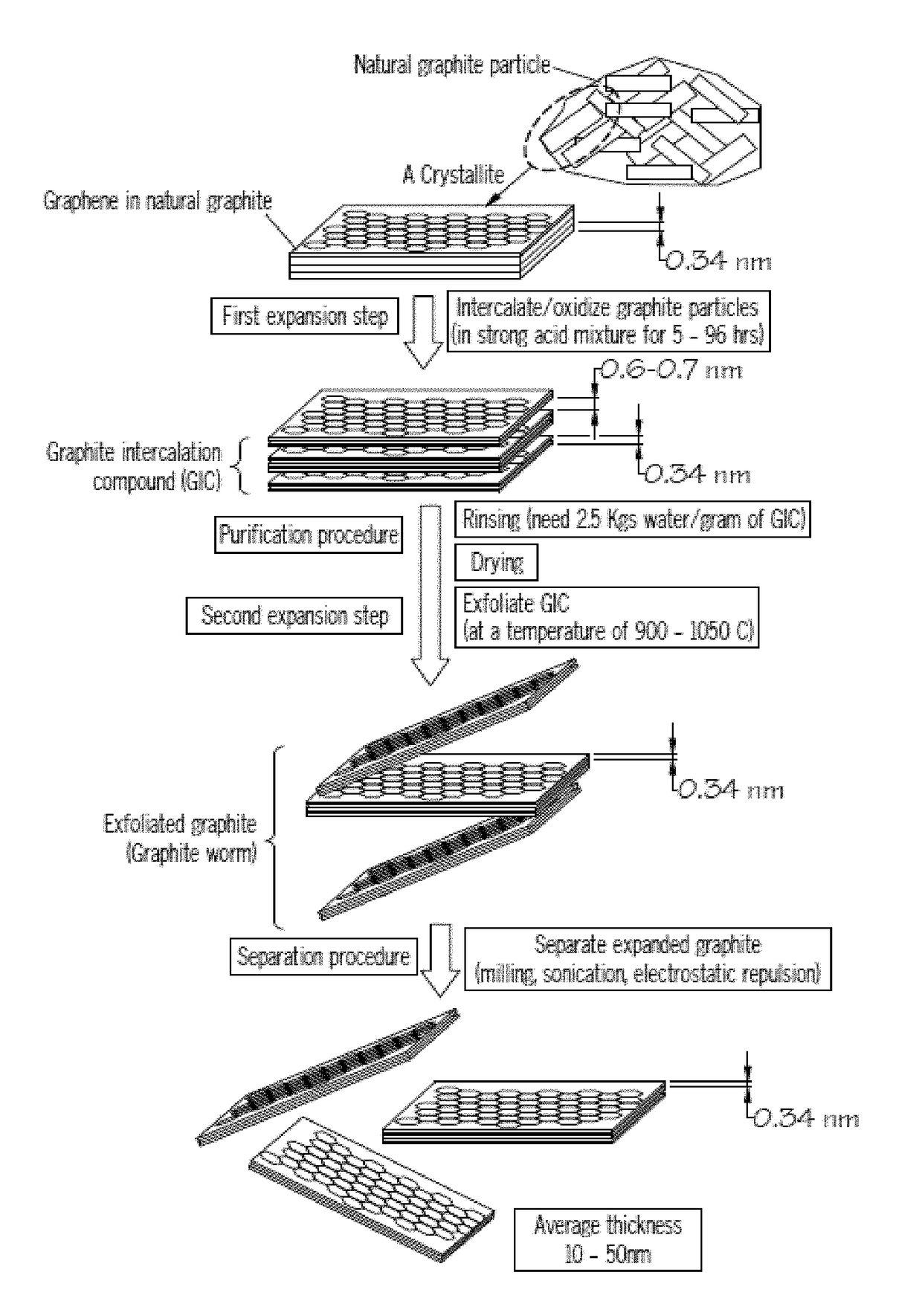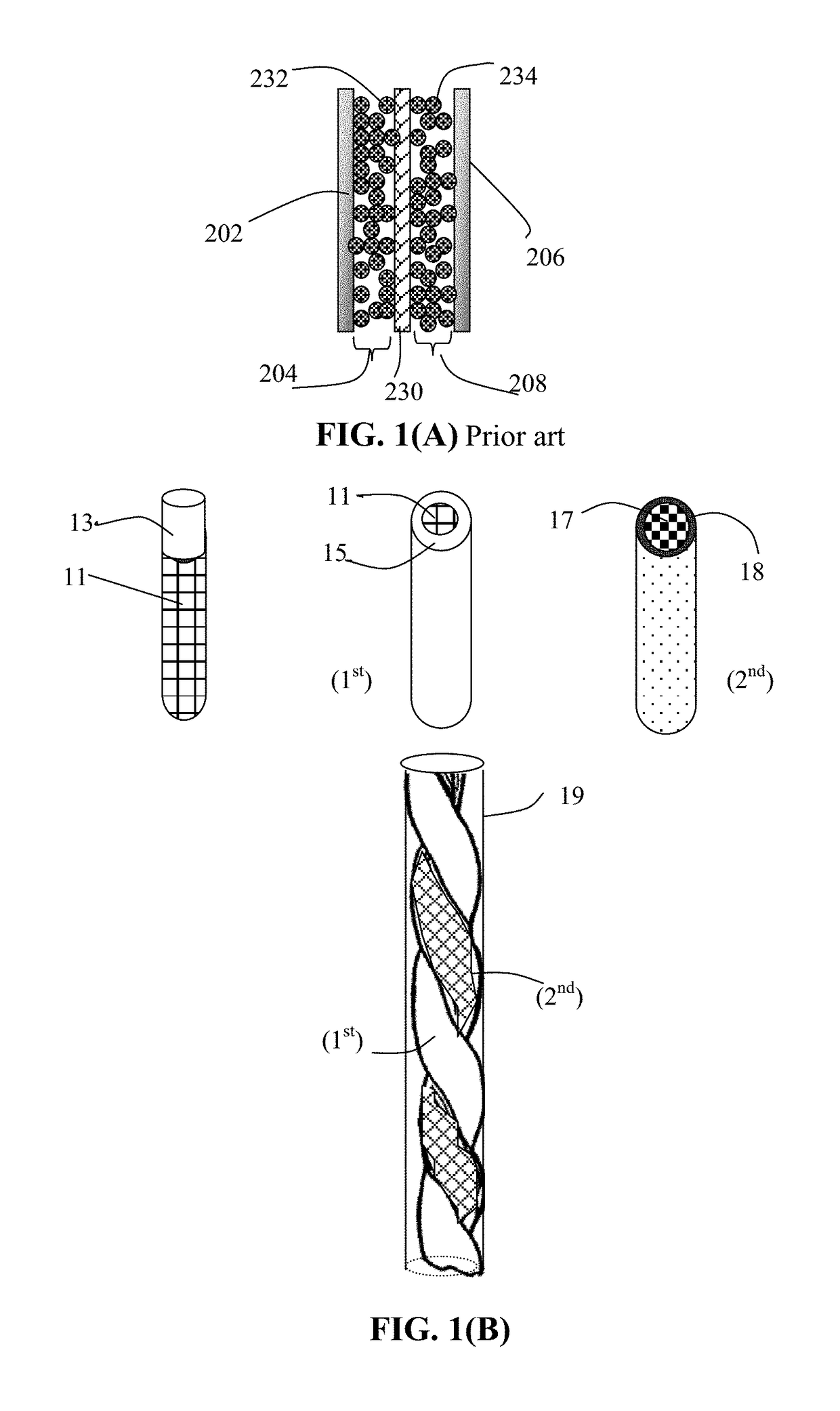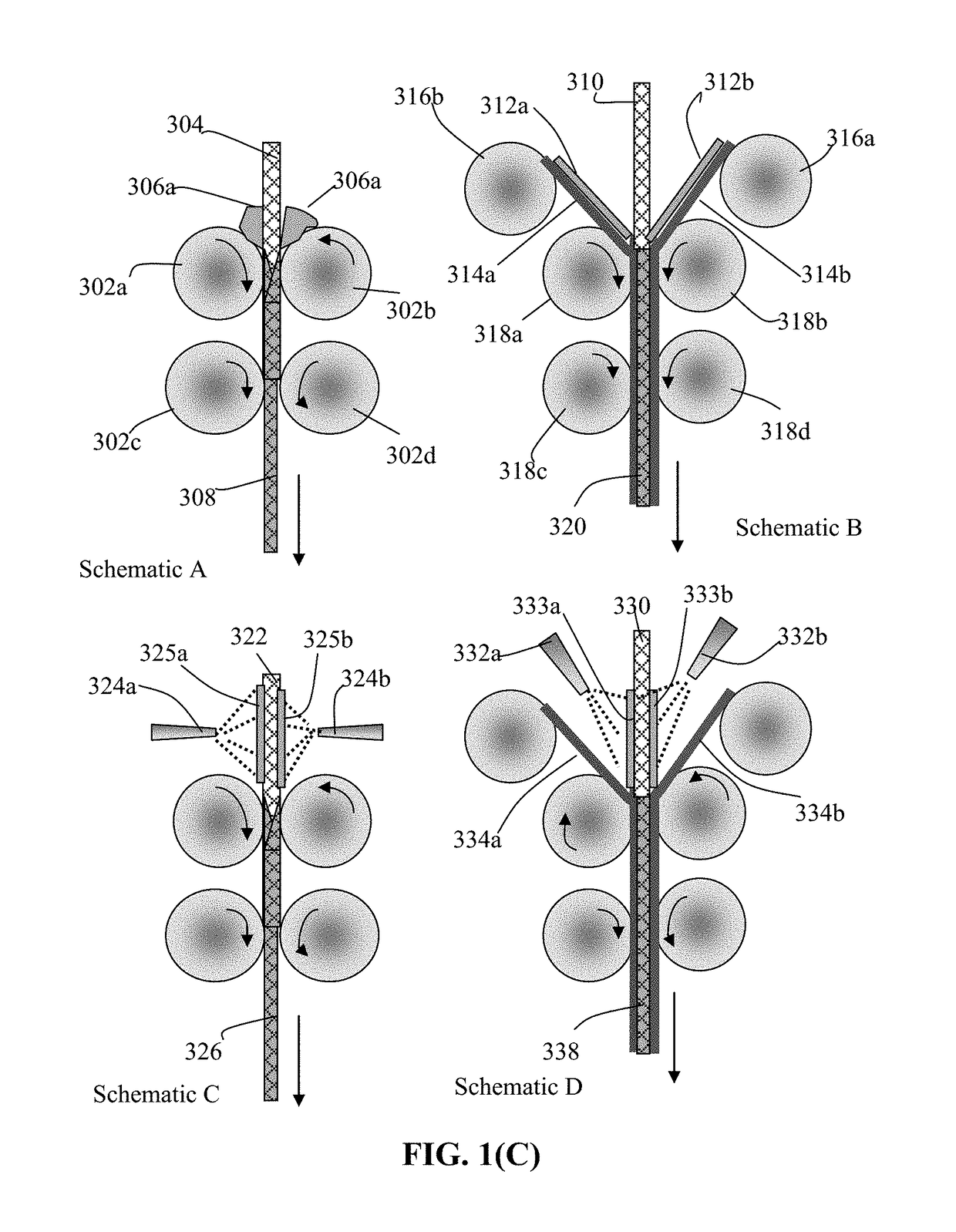Process for Flexible and Shape-Conformal Rope-Shape Supercapacitors
a supercapacitor and flexible technology, applied in the field of supercapacitors or ultracapacitors, can solve the problems of low apparent densities of active materials, low actual mass loading of electrodes, and severe constraints on the adaptability or feasibility of being implemented in confined spaces, so as to achieve maximum contact or interfacial areas
- Summary
- Abstract
- Description
- Claims
- Application Information
AI Technical Summary
Benefits of technology
Problems solved by technology
Method used
Image
Examples
example 1
Illustrative Examples of Electronically Conductive Porous Rods or Filaments as a Porous Current Collector to Accommodate an Active Material-electrolyte Mixture
[0174]Various types of metal foams, carbon foams, and fine metal webs are commercially available for use as conductive porous rods (serving as a current collector) in an anode or cathode; e.g. Ni foam, Cu foam, Al foam, Ti foam, Ni mesh / web, stainless steel fiber mesh, etc. Metal-coated polymer foams and carbon foams can also be used as current collectors. For making macroscopic rope-shaped flexible and shape-conformable supercapacitors, the most desirable thickness / diameter ranges for these conductive porous rods are 50-1000 μm, preferably 100-800 μm, more preferably 200-600 μm. For making microscopic rope-shape supercapacitors (having a diameter from 100 nm to 100 μm, for instance), graphene foams, graphene aerogel foam, porous carbon fibers (e.g. made by electro-spinning polymer fibers, carbonizing the polymer fibers, and a...
example 2
Ni foam and CVD Graphene Foam-based Porous Rods Supported on Ni Foam Templates
[0175]The procedure for producing CVD graphene foam was adapted from that disclosed in open literature: Chen, Z. et al. “Three-dimensional flexible and conductive interconnected graphene networks grown by chemical vapor deposition,” Nature Materials, 10, 424-428 (2011). Nickel foam, a porous structure with an interconnected 3D scaffold of nickel was chosen as a template for the growth of graphene foam. Briefly, carbon was introduced into a nickel foam by decomposing CH4 at 1,000° C. under ambient pressure, and graphene films were then deposited on the surface of the nickel foam. Due to the difference in the thermal expansion coefficients between nickel and graphene, ripples and wrinkles were formed on the graphene films. Four types of foams made in this example were used as a current collector in the presently invented lithium batteries: Ni foam, CVD graphene-coated Ni form, CVD graphene foam (Ni being etc...
example 3
Graphitic Foam-Based Conductive Porous Rods from Pitch-Based Carbon Foams
[0180]Pitch powder, granules, or pellets are placed in a aluminum mold with the desired final shape of the foam. Mitsubishi ARA-24 meso-phase pitch was utilized. The sample is evacuated to less than 1 torr and then heated to a temperature approximately 300° C. At this point, the vacuum was released to a nitrogen blanket and then a pressure of up to 1,000 psi was applied. The temperature of the system was then raised to 800° C. This was performed at a rate of 2 degree C / min. The temperature was held for at least 15 minutes to achieve a soak and then the furnace power was turned off and cooled to room temperature at a rate of approximately 1.5 degree C / min with release of pressure at a rate of approximately 2 psi / min. Final foam temperatures were 630° C. and 800° C. During the cooling cycle, pressure is released gradually to atmospheric conditions. The foam was then heat treated to 1050° C. (carbonized) under a n...
PUM
| Property | Measurement | Unit |
|---|---|---|
| specific surface area | aaaaa | aaaaa |
| width | aaaaa | aaaaa |
| length/diameter aspect ratio | aaaaa | aaaaa |
Abstract
Description
Claims
Application Information
 Login to View More
Login to View More - R&D
- Intellectual Property
- Life Sciences
- Materials
- Tech Scout
- Unparalleled Data Quality
- Higher Quality Content
- 60% Fewer Hallucinations
Browse by: Latest US Patents, China's latest patents, Technical Efficacy Thesaurus, Application Domain, Technology Topic, Popular Technical Reports.
© 2025 PatSnap. All rights reserved.Legal|Privacy policy|Modern Slavery Act Transparency Statement|Sitemap|About US| Contact US: help@patsnap.com



